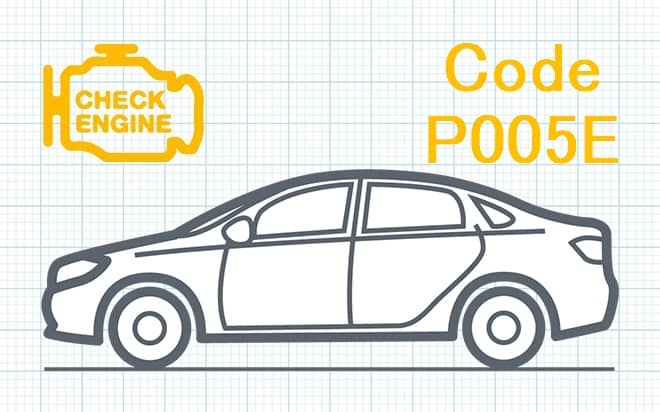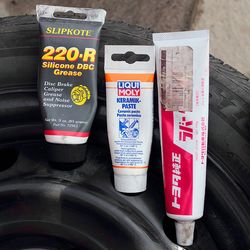
P005E Turbo / Supercharger Boost Control B Low Voltage
Content
- P005E Turbo / Supercharger Boost Control B Low Voltage
- OBD-II DTC Datasheet
- What does this mean?
- What is the severity of this DTC?
- What are some of the symptoms of the code?
- What are some of the common causes for the code?
- What are some of the P005E troubleshooting steps?
- Related DTC discussions
- Need more help with your P005E code?
P005E Turbo / Supercharger Boost Control B Low Voltage
OBD-II DTC Datasheet
Low voltage in the supply voltage circuit of the regulator B turbocharger / supercharger
What does this mean?
This is a generic powertrain diagnostic trouble code (DTC) and is commonly applied to OBD-II vehicles. This may include, but is not limited to, vehicles from Chevy (Chevrolet), GMC (Duramax), Dodge, Ram (Cummins), Isuzu, Ford, Vauxhall, VW, etc. Although general, exact repair steps may vary by depending on the year. make, model and equipment of the power unit.
Turbochargers, superchargers and any other forced induction (FI) systems in this regard use the energy generated by the engine (e.g. exhaust pulses, belt driven screw compressors, etc.) to increase the amount of air that can be introduced into the combustion chamber ( increased volumetric efficiency).
Considering the fact that in forced induction systems, the inlet pressure must be varied and regulated to suit the operator's multiple power needs. Manufacturers use a form of boost control valve (AKA, Waste-gate, boost control solenoid, etc.) that is controlled and controlled by the ECM (Engine Control Module) to provide a stoichiometric air / fuel mixture (ideal). ... This is done by mechanically adjusting the charger blades. These blades are responsible for adjusting the amount of boost (inlet pressure) into the chamber. As you can imagine, a problem with the boost control component can cause handling problems. The problem is that when the ECM loses control of boost, your vehicle typically goes into a lame mode to avoid engine damage (due to over / under boost conditions causing a potentially dangerous rich and / or lean A / F).
As for the letter "B", here you can indicate the connector, wire, circuit group, etc. However, the manufacturer's specifications are the best resource you can have for this.
The ECM turns on the engine check lamp (CEL) using P005E and associated codes when it detects a malfunction in the boost control system.
DTC P005E is activated when the ECM (Engine Control Module) detects an electrical value lower than the "B" boost control supply voltage required on the circuit.
Turbocharger and related components: 
What is the severity of this DTC?
The severity level is set to Medium to High. When there is a problem with the forced intake system, you run the risk of changing the air / fuel ratio. Which, in my opinion, can cause significant engine damage if ignored or left unattended. You not only run the risk of damaging the internal components of the engine, but also get terrible fuel consumption in the process, so it is in your best interest to troubleshoot any faults in the forced induction system.
What are some of the symptoms of the code?
Symptoms of a P005E DTC may include:
- Low, erratic and / or abnormal power levels
- General poor handling
- Decreased throttle response
- Problems climbing hills
- The car goes into lame mode (ie, fail-safe).
- Intermittent control symptoms
What are some of the common causes for the code?
Reasons for this P005E code may include:
- Defective or damaged boost control solenoid (e.g. lever sticks, broken, bent, etc.)
- Corrosion causing high resistance (e.g. connectors, pins, ground, etc.)
- Wiring problem (e.g. worn out, open, short to power, short to ground, etc.)
- ECM (engine control module) internal problem
- Excessive exhaust soot in the charger blades causing high / low / abnormal boost levels to stagnate
- Boost control module problem
- Exhaust gas leak
What are some of the P005E troubleshooting steps?
Basic step # 1
It is important to remember that forced induction systems generate dangerous amounts of heat and can severely burn your skin if unprotected and / or the engine is cold. However, visually locate the boost control solenoid. They are usually installed directly on the charger itself, but not always. Once discovered, make sure its mechanical functionality is up to par.
This is a must because, after all, it mechanically controls your charger and builds up the pressure. If you can manually move the lever from the solenoid to the charger body, that's a good sign. Note that this is not possible on some systems.
Basic step # 2
I have sometimes seen these solenoids have adjustable levers to help find the sweet spot. Of course, this varies considerably between manufacturers, so do your research first.
NOTE. Be as non-invasive as possible. You don't want to damage the charger components, as they tend to be expensive.
Basic step # 3
Depending on your specific setup, the module can be installed directly on the boost regulator. As an assembly is admissible. If so, make sure there are no signs of water intrusion. Any signs of corrosion / water / damage and assembly (or, if possible, just the module) will most likely require replacement.
Basic step # 4
Pay particular attention to the harnesses leading to the boost control solenoid. They pass in close proximity to dangerous amounts of heat. In most cases, if thermal damage is present, it will be evident in the early stages of troubleshooting.
Related DTC discussions
- There are currently no related topics in our forums. Post a new topic on the forum now.
Need more help with your P005E code?
If you still need help with DTC P005E, post a question in the comments below this article.
NOTE. This information is provided for informational purposes only. It is not intended to be used as a repair recommendation and we are not responsible for any action you take on any vehicle. All information on this site is protected by copyright.

